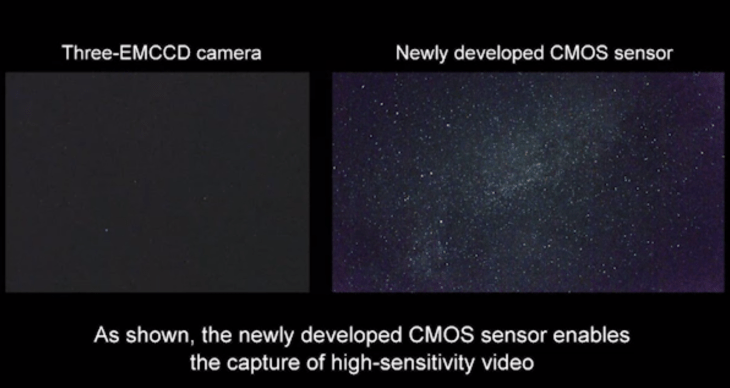Canon today announced the successful creation of a new full-frame CMOS sensor, designed exclusively for shooting video. The new sensor can capture full-HD video with extremely low noise in settings where it has been hard for traditional cameras to even operate at all in the past. The sensor will have immediate benefits for astrophotography and for use in security systems, but the developments here could eventually help improve the quality of professional and consumer cameras, too.
The new sensor from Canon features large pixels, each of which measure around 7.5x those found on the sensor Canon uses in its EOS-1DX DSLR. The larger pixels are paired with new noise reduction technologies that counteract the added noise effect of using larger pixels, which allows for full HD video shooting in environments as dark as an outdoor setting with just a crescent moon providing illumination. That means it can capture video with fully visible objects even in situations where the human eye would be hard-pressed to make out any definite shapes.
Canon has already built a prototype device to test out the new sensor, and captured things like footage from a room where only lit incense sticks provided any light, the Geminid meteor shower and other night sky scenes. The prototype would be most useful in the immediate future for astronomical and nature photography, medial research and security implementations, but through “further development,” Canon imagines similar CMOS sensor tech will also be able to greatly improve other more creative pursuits.
Low light video is already an impressive feature of full-frame DSLR cameras, but a sensor like this that takes things to the extreme could take nighttime video capture to a whole new level. Imagine greatly reducing the cost of filming at night, for instance, or, depending on how things progress, bringing similar improvements to mobile and smartphone shooters. We’re still a long way off from that, but this is a very impressive first step, as you can see from the sample video available on Canon’s own site.
